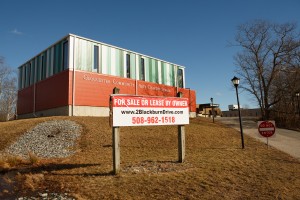By Peter Dolan
Last month’s collapse of the Gloucester Community Arts Charter School warns us that the Department of Elementary and Secondary Education (DESE) is not adequately supervising Commonwealth Charter Schools. The school’s failure in the middle of its third year shows that it is time for a moratorium on the granting of new Commonwealth Charters, not the time to lift the charter cap, and not the time to allocate an additional million dollars a year to the DESE to support the creation of more charter schools.
Many of the problems at the Gloucester charter school might have remained out of sight if concerned local residents had not called attention to them. It should not have fallen on private citizens to ensure that this public school was adhering to the same standards and following the same rules that apply to any public school. That it did is a clear sign that granting more Commonwealth Charters does not make sense in light of the alternatives offered by locally supervised Horace Mann Charters and Innovation Schools.
The school’s chaotic mid-week closing in early January of its third year, abruptly sending over 100 students in search of new schools, capped a history of political meddling when the charter was granted, failure to hold the school accountable for what was promised in the school’s charter application, massive turnover of staff and students, failure to meet enrollment targets, and failure to deliver special education services.
Right after accepting an offer from the DESE — surrender their charter in return for accelerated funding — that on its face was intended to allow the school to stay open until the end of the school year, the school abruptly closed its doors. The agreement between the school and the DESE did spare the Board of Elementary and Secondary Education (BESE) from having to vote on Commissioner Mitchell Chester’s recommendation that the school’s charter be revoked. However, the school’s implosion three weeks after the agreement was reached leaves us wondering how carefully the DESE looked at the school’s desperate financial situation before it proposed the “deal.”
The Commissioner recommended that the school’s charter be revoked after the release of a scathing report on conditions at the school, along with the discovery of embarrassing lapses in supervision by the DESE. Despite the school’s high profile (the granting of its charter remains the subject of ongoing litigation), midway through its third year of operation the school did not have an Accountability Plan approved by the DESE. That plan is supposed to be finalized by the end of a charter school’s first year. For the school’s final site visit evaluation, the DESE engaged only two “outside” evaluators, both charter school employees. One of the evaluators, Diana Lam, had an undisclosed financial relationship with the school. (An investigation of the school by the State Auditor’s Office is also ongoing.
A year before the school opened, public records requests revealed that DESE evaluators had determined that the proposed school failed to satisfy minimum legal chartering criteria. This was concealed from the BESE when it voted to grant the school’s charter. After it opened, the school was cited for failing to provide special education services as well as for violating public bidding and open meeting laws. There was a cyclone of staff and trustee turnover: When it closed, only two teachers remained from last year, none remained from the prior year, the principal was the third in as many years, and only one founder remained on a board that had struggled to maintain the legal minimum number of members. Yet the school was allowed to continue lurching along despite mounting evidence that it was not delivering on its promises, culminating in a stunning list of failures in its final evaluation.
For three years in a row the school’s “pre-enrollment” figures grossly overstated actual enrollment. For example, the school cited a pre-enrollment of 212 for the current school year in its August 2012 annual report to the Department, but reported actual enrollment of 124 when it opened in September. While state payments to the school eventually reflected actual enrollment, these pre-enrollment claims were used to determine the year’s first payment from the Commonwealth to the school. This provided the school with an interest-free loan and distorted municipal budgets as officials were forced to address the diversion of hundreds of thousands of dollars of state aid to the charter school for what turned out to be nonexistent students.
The recent revelations about the Gloucester charter school form a constellation of flashing red stop lights, warning us that it is time to pause, stop approving new Commonwealth Charters, and not rush forward to raise the charter cap.
Peter Dolan is the lead plaintiff in a parents’ lawsuit contending that the state broke the law when it granted a charter for the Gloucester Community Arts Charter School.


